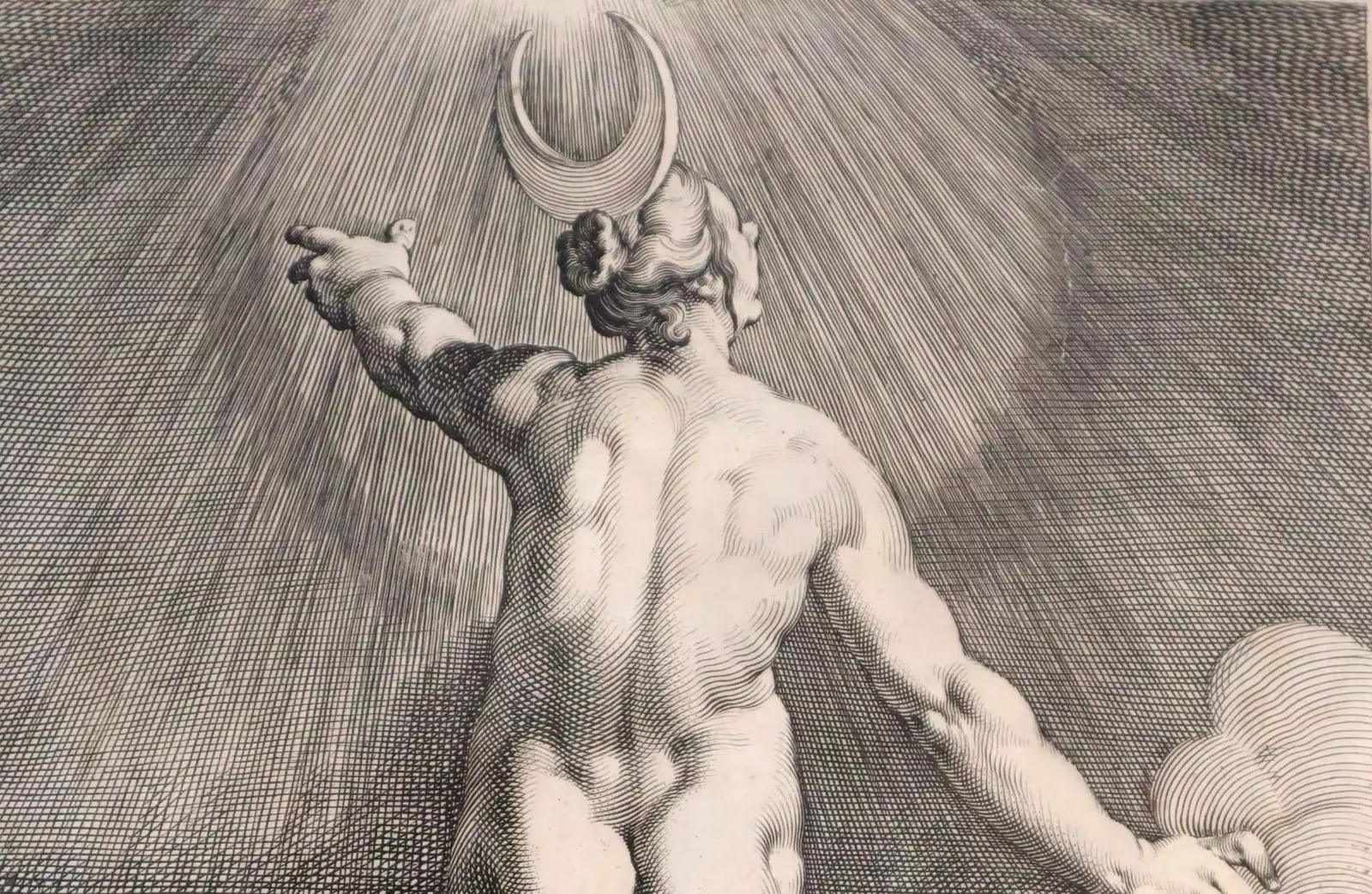
Diana (Matham, 1606)
Tides, animals and human beings. No one escapes the magical influence of the Moon. The energy and power of our satellite has fascinated mankind since time immemorial , which is why setting foot on it 50 years ago was one of the great milestones in history.
The night star is also considered as symbol of femininity and the antiquarian Palau Antiques has wanted to pay tribute to the relationship between women and the moon with a most special exhibition.
Among the pieces that we can contemplate we will find works by artists such as Francisco de Goya, William Hogarth, Hendrick Goltzius, Modest Urgell, Félicien Rops, Gustave Doré, Ramon Calsina, Joan Miró and Perejaume, among others.
Moon and Woman It can be visited until February 7, 2020 **at number 1 Carrer de Gràcia (Barcelona) ** and here you have a piece of all the treasures that you will find there.
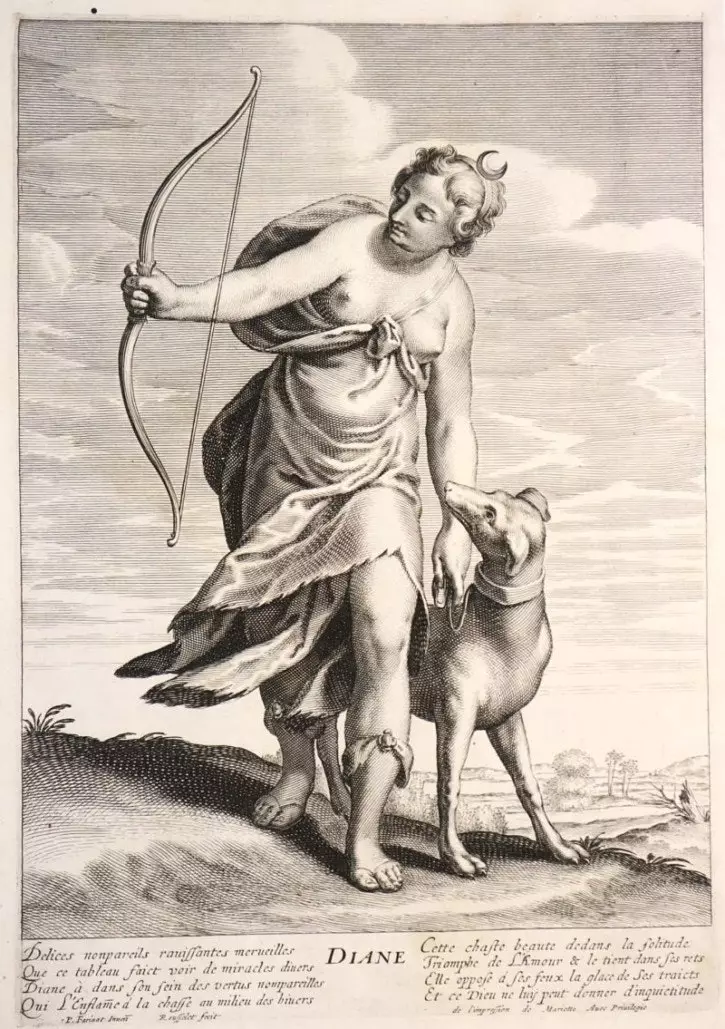
Diana (Gilles Rousselet, P. Farinat and Pierre Mariette)
QUEEN OF THE NIGHT
The exhibition can be visited physically but you can also admire the different works that make it up in his web page .
Thus, Palau Antiguitats inaugurates a new presentation format on the web with which they seek give more prominence to the images of the works, which are accompanied by comments made by the art historian and architect Mario Crossier.
Star travel can be performed by themes –Claire de Lune, From Goddesses to Witches, Exploring the Moon and Influence of the Moon–, chronologically –from the 16th century to the 21st century– or by techniques –such as watercolour, etching, burin, charcoal, photography, heliogravure, lithography, ink or xeligraphy–.
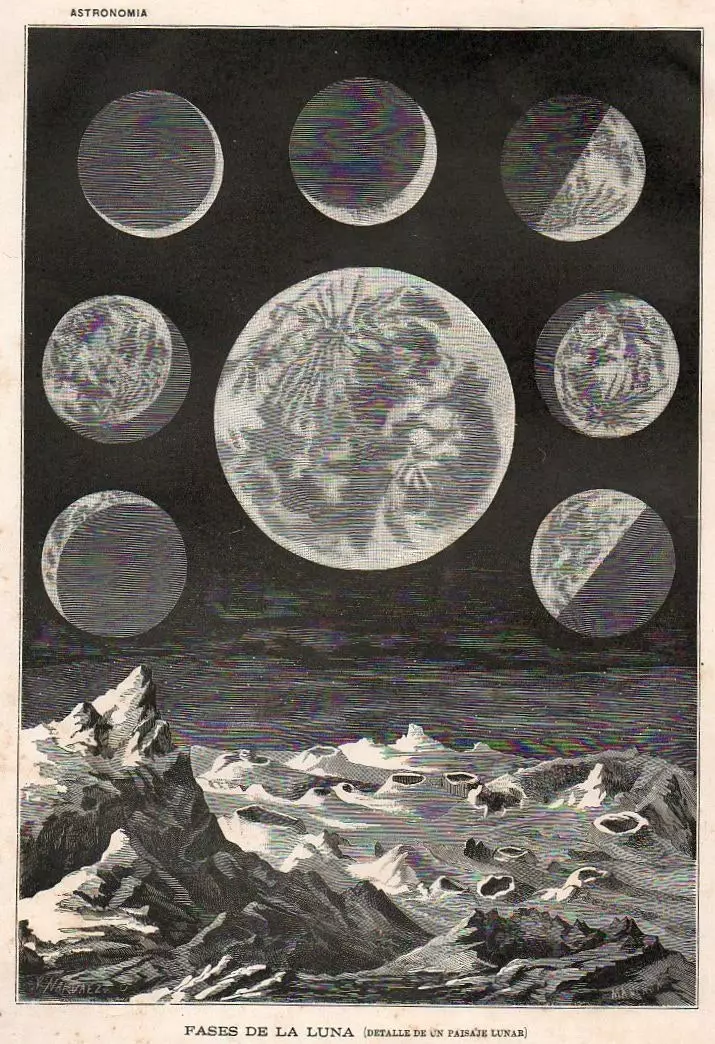
Phases of the Moon (Manchón, P. Narvaez, Astort)
ASTRONOMICAL VALUE...
The exhibition brings together almost a hundred pieces –engravings, drawings, photographs and some objects– , which show the fascination and interest of human beings in our natural satellite.
The words of Mario Croissier to explain the reasons for the exceptional nature of this celestial object could not be more illuminating: "In the first place, because It is the largest satellite in relation to the size of its planet in our solar system..
“Second, because it is the only satellite of the Earth, when the normal thing is that the planets have many or none” , he continues exhibiting in his introduction to the Luna y Mujer exhibition.
Thus, this could lead astronomers to consider The Earth-Moon couple as a double planetary system, but Croisier explains why it is not so: “The difference in mass between the two planets places the gravitational center of gravity inside our planet. so the orbit is roughly that of a satellite with respect to its planet”.
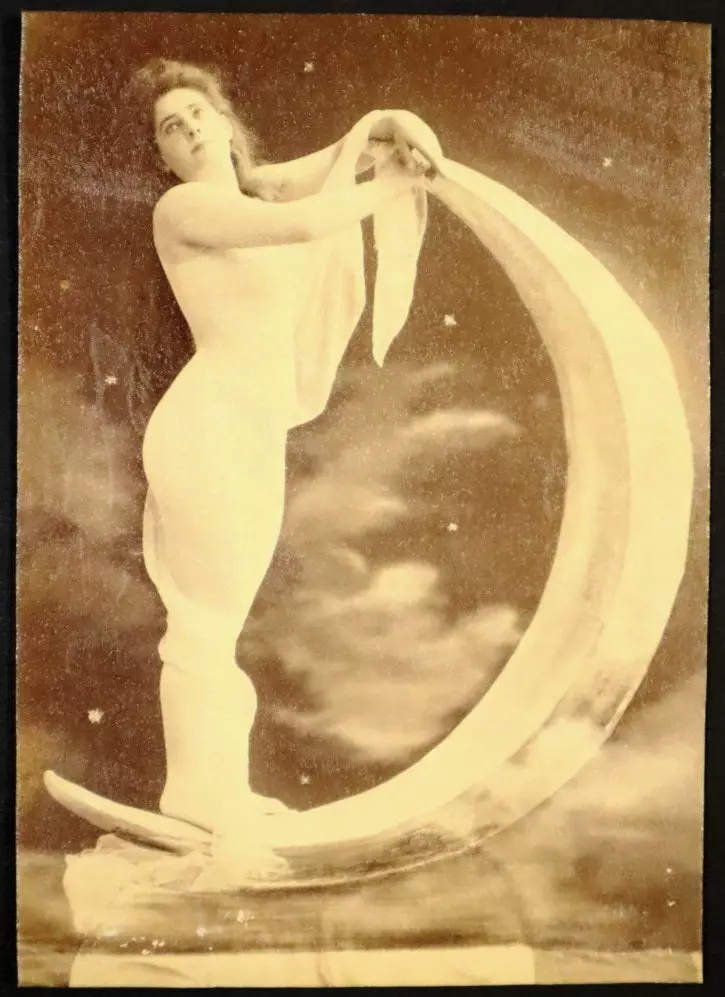
Moon and Woman (Ca. 1895, Anonymous)
...AND SYMBOLIC VALUE
And along with its value in the field of astronomy, what most fascinates us is undoubtedly the value of the Moon as a symbol. "The Moon, due to its undeniable role in the night sky, has been the repository of an enormous symbolic baggage" Croissier says.
Why? There are many reasons: its orbital movements, its cyclical phases, its precise rhythms, its influence on the tides, its dim auxiliary light... For all these reasons, the lunar star "became an early symbol of transformation and natural cycles, of the measurement of time, of life with its death and the hope of a resurrection” , exposes the historian.
All that legacy has given to build a most interesting imaginary in which they mix legends, superstitions, stories, beliefs and close relationships.
One such relationship associates the words moon and femininity wrapping them in an intimate bond that has hypnotized many: artists, poets, musicians, writers, painters...
Thus, a symbolic universe has been built "where the beautiful and sensual are intermingled with the hidden and the terrible," says Croissier. weaving an intimate alliance that safeguards its charm and also its mystery”.
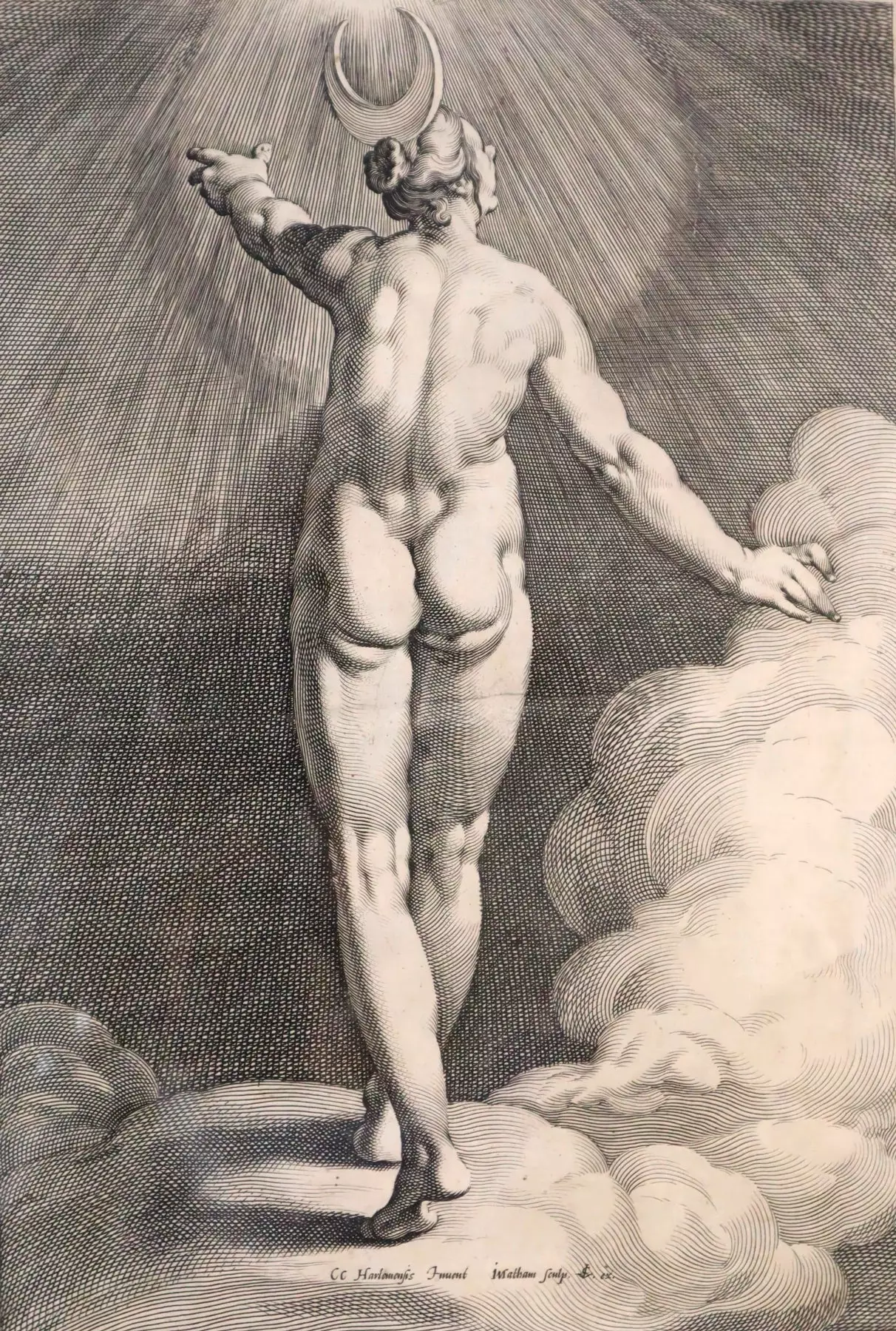
Diana (Matham, 1606)
CLAIRE DE LUNE
the clarity of the moon , the protagonist of one of the themes into which Moon and Woman are divided, constitutes a slight reflection of sunlight on the satellite's surface, made up of dark rocks and lunar dust.
There was a time when the light of the moon was the only guide for those who lived – or were forced to live – at night: night trips, harvesting and a multitude of activities.
Romanticism marked the starting point for artists to begin to recreate in the games of light and shadow of the landscapes that the night gives, a contrast where the moonlight becomes the territory where vision is still possible, and serves as inspiration for the artist.
In this section we can find works such as The flight to Egypt (drawing by Adam Elsheimer and engraving by Hendrick Goudt), night fishing scene (Orio Ambrogio), Moonlight in Valmondois (Charles Francois Daubigni) and Night. Barahona (Modest Urgell i Inglada).
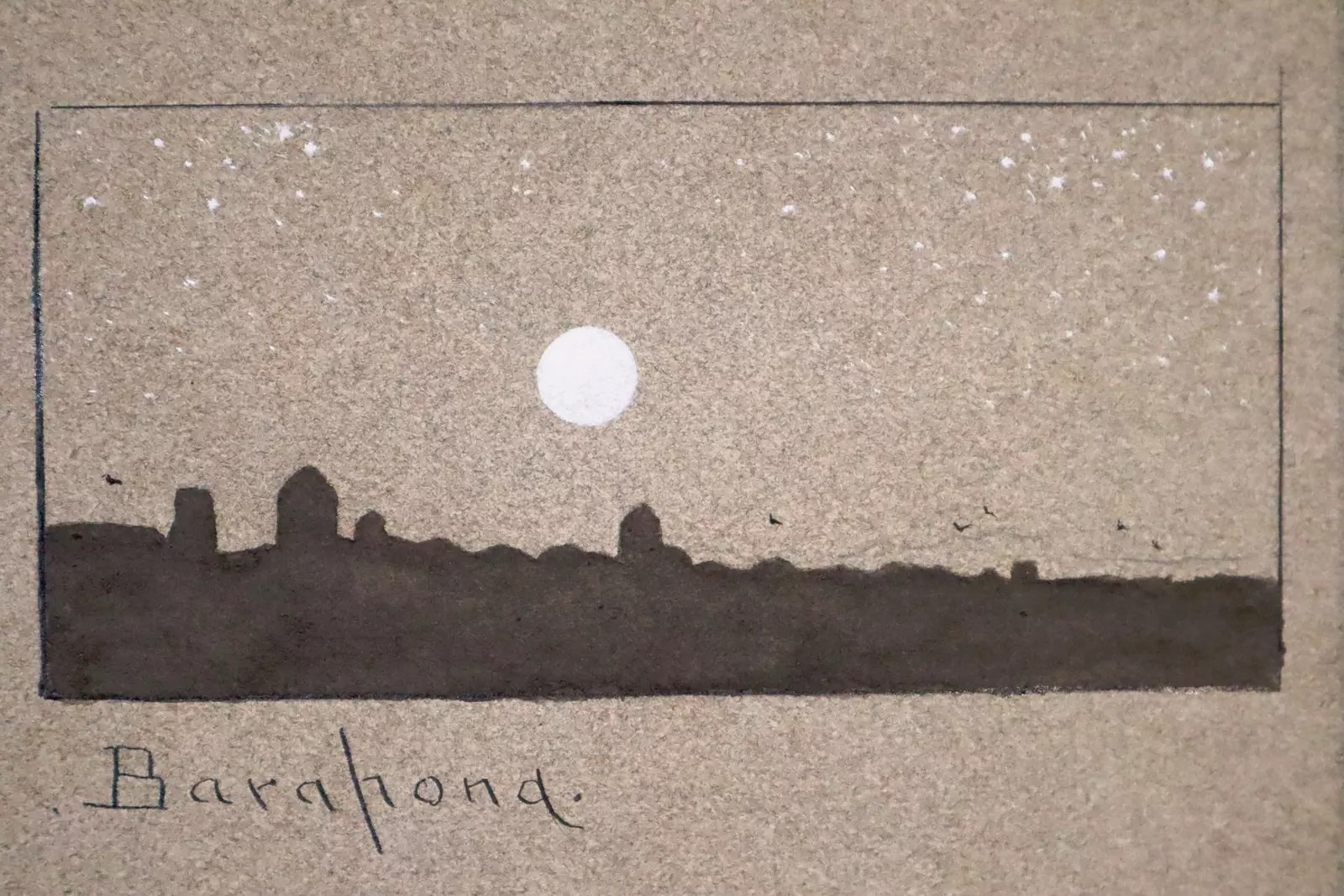
Barahona (Modest Urgell)
FROM GODDESSES TO WITCHES
In classical culture, three goddesses were associated with the Moon: Selene (the oldest of all, sister of Helios, the sun and Eos, the dawn), Artemis or Diana for the Romans (goddess of hunting and wild nature) and Hecate (the three-faced goddess, a patron deity of sorcery and black magic).
In the sixteenth century, the church began its fight against paganism and all those rites practiced by the worshipers of the Moon. Despite this battle Christianity itself took the lunar symbology and built an iconography based on the Virgin Mary in her condition as Immaculate Conception.
Among the works that we can see in this section are Sagebrush (Hubertus Quellinus) , witch scene (Bartholomeus Spranger), Immaculate Conception with the litanies (Anonymous) , immaculate (Armand Duran) and various works by Francisco de Goya such as If it dawns we go, beautiful teacher! either Where is mom going? , among other.
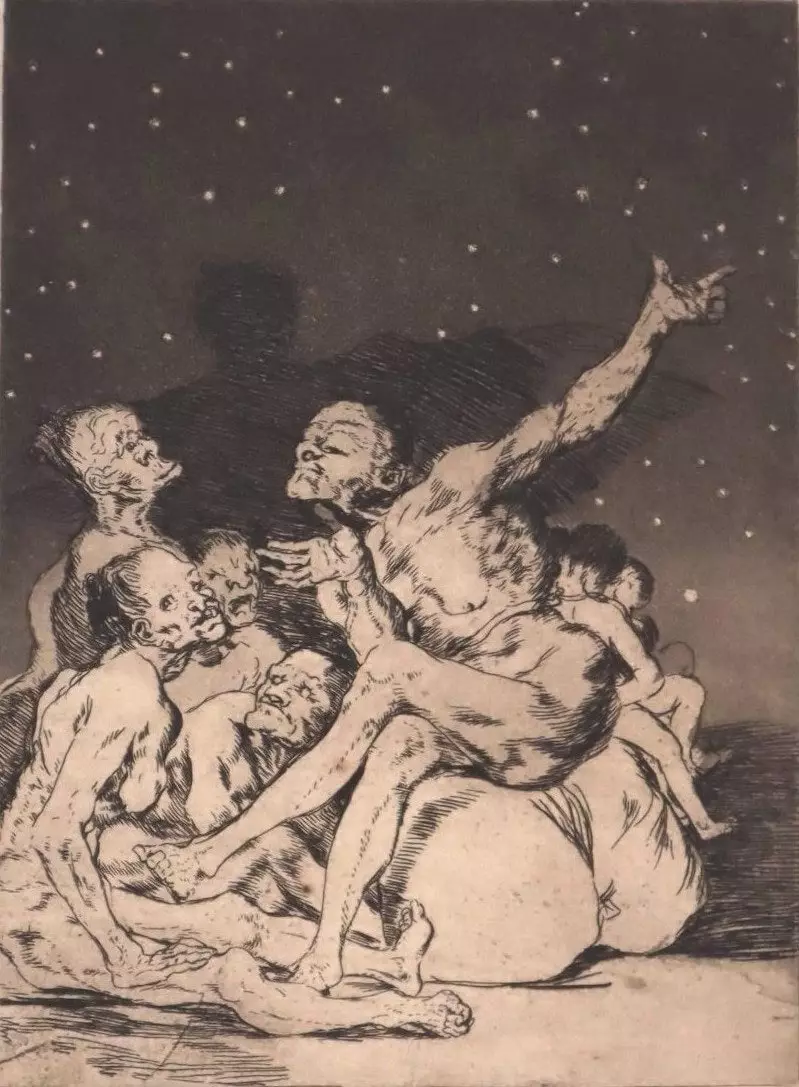
If it dawns we go (Francisco de Goya)
EXPLORE THE MOON
Few know but when we capture the image of the Moon, we begin to break its spell and this happened with the objective description of the Moon and the substitution of the astrologer for the astronomer.
Lunar cartography thus gained great importance and the earthlings were drawing maps, discovering accidents and naming each of its valleys, craters and mountain ranges . They were a lot those who dreamed of traveling to the moon and described that journey through art, literature, and poetry.
The works in this section are the most fascinating and among them we can find pieces such as Frontispiece of the work: "The Sphere of the Moon" (Felicien Rops), They headed to the kingdom of the Moon (engraving by Charles Barbant, drawing by Gustave Doré and illustration by Font i Torrents), lunar maps dating from 1897 and 1907 or the series Photographic Card of the Moon (C. L. Morvan, L. Massard).
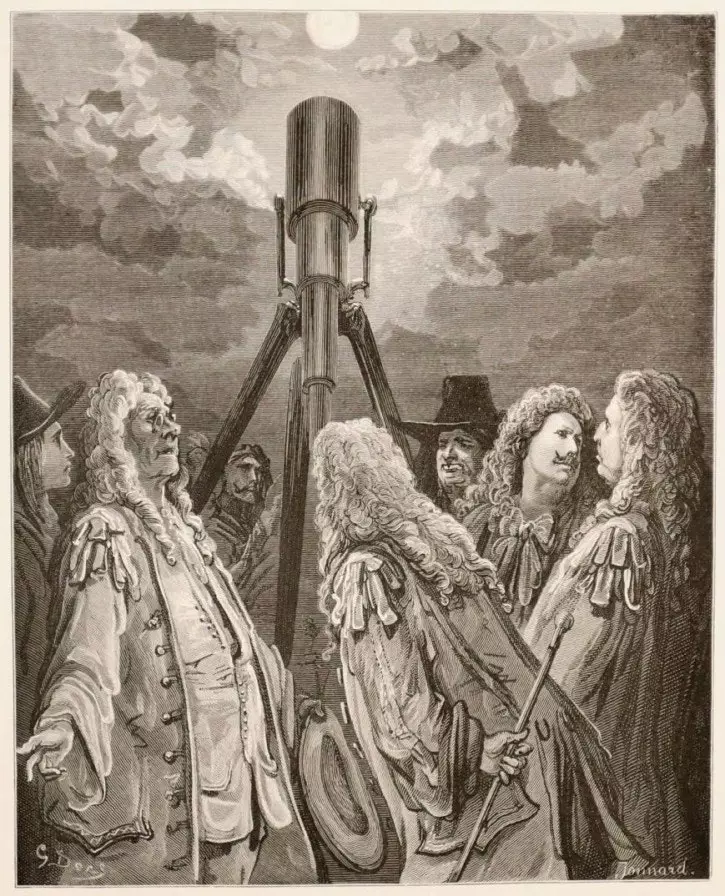
An Animal on the Moon (Pau-Parcel Jonnard, Gustave Doré)
INFLUENCE OF THE MOON
The last section of the exhibition is entitled Influence of the Moon and it explores its importance in terrestrial life.
Why is it so relevant on our planet? By its gravitational action , which stabilizes the Earth's axis of rotation, and by its influence on the tides.
But the influence of the star goes far beyond the tides, and the human being did not take long to realize that lunar phases had different effects on animals, crops, body and soul.
In addition, the phases and movements of the satellite were taken as justification for certain female behaviors and, of course, the relationship with the fertility of women.
Thus, in this section we find works such as wrathful sketch (E. Alio) , moon allegory Y sun allegory (both by Martin de Vos), the chickadee (Pere Prat i Ubach), moon and woman (Anonymous) and Woman and Moon (Joan Miro) .
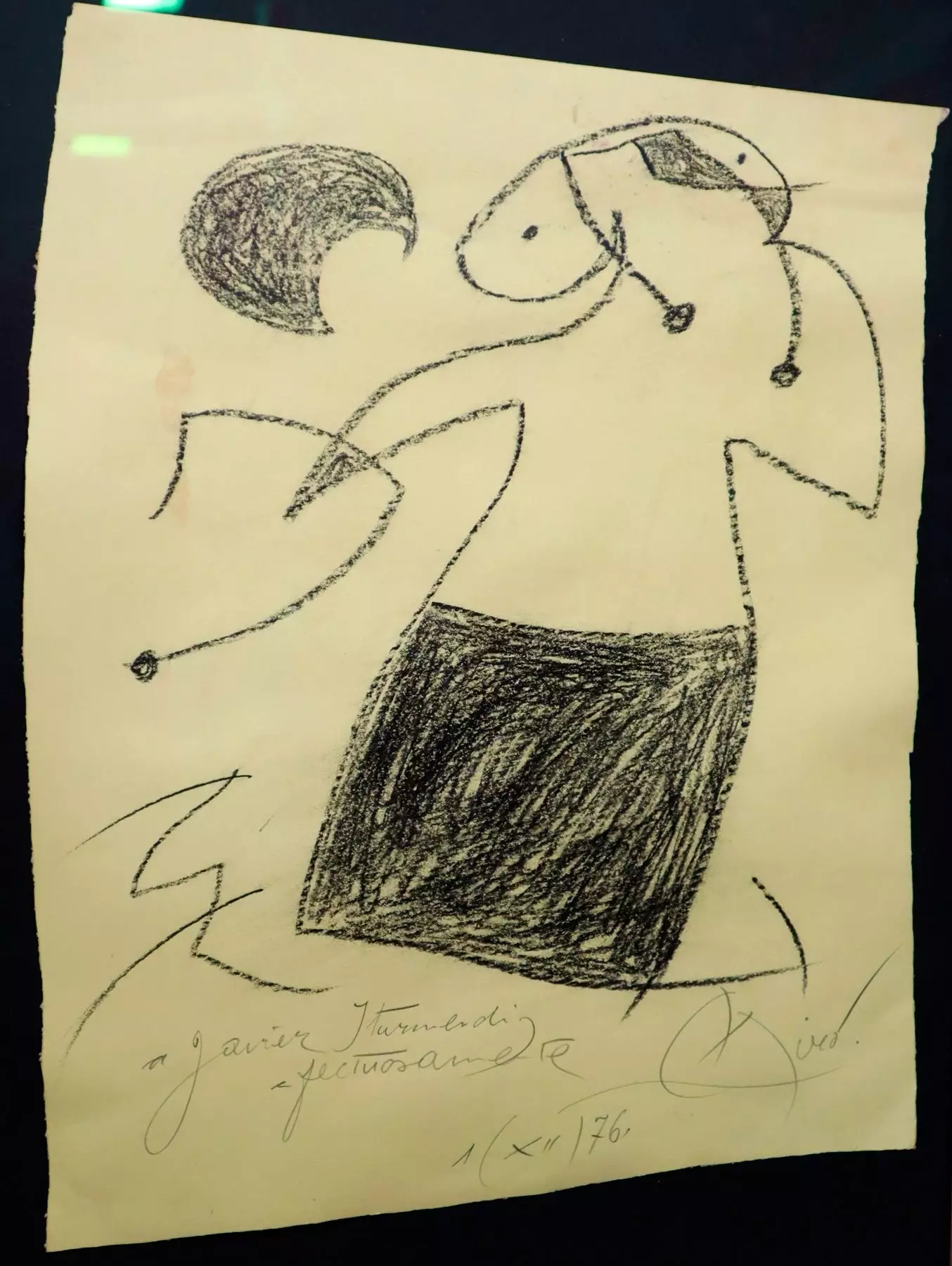
Woman and Moon (Joan Miró)
PRACTICAL DATA
The entrance to the exhibition is free and you can visit until February 7, 2020 Monday to Friday from 11 a.m. to 2 p.m. and from 5:00 p.m. to 8:00 p.m.
If you can't wait, ** here's a lunar appetizer. **
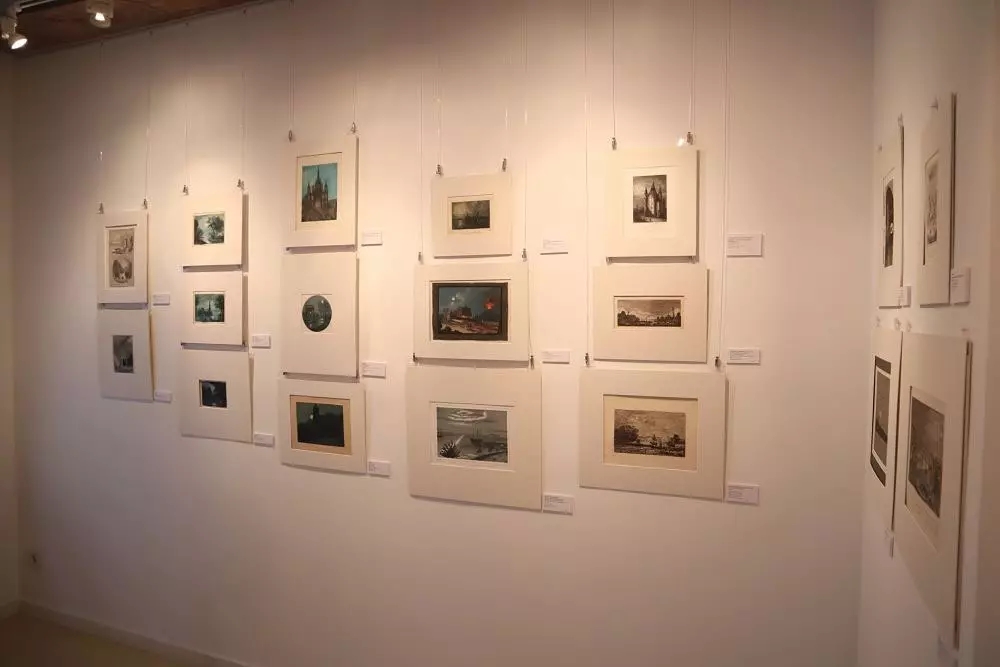
Moon and Woman, in Palau Antiguitats
